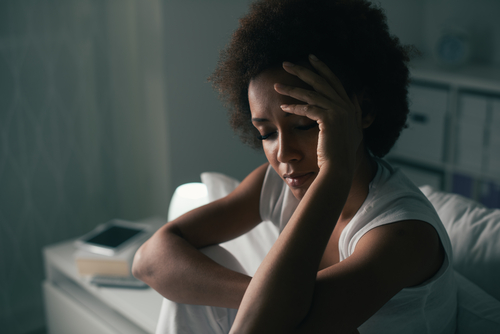MD Patients May Benefit from Targeted Therapy for Sleep Disorders

Many patients with myotonic dystrophy type 1 (DM1) have sleep and respiratory disorders and may benefit from targeted therapy.
New research has found that the causes of sleepiness in patients with DM1 are variable, but include poor sleep patterns, obstructive sleep apnea, respiratory failure, and narcolepsy. DM1 is the most common adult muscular dystrophy.
Only 29 percent of the patients studied were found to benefit from targeted sleep therapies, but researchers said additional studies may help distinguish which DM1 patients would benefit most from these therapies.
The study, titled “Sleepiness and Sleep-related Breathing Disorders in Myotonic Dystrophy and Responses to Treatment: A Prospective Cohort Study,” is published in the Journal of Neuromuscular Diseases.
Myotonic dystrophies are inherited, progressive, multisystemic disorders characterized by neuromuscular weakness, myotonia, early-onset cataracts, endocrine abnormalities, and involvement of other organs, including the heart. The central nervous system (CNS) and the gastrointestinal system may also be involved. In myotonic dystrophy type 1 (DM1), sleep disorders are common, with excessive daytime sleepiness (EDS) as a predominant feature.
“Excessive daytime sleepiness is a common problem for people with myotonic dystrophy, affecting between 33% and 80% of patients. Other contributing causes can be attributed to poor sleep patterns, obstructive sleep apnea (OSA), respiratory failure, periodic limb movements during sleep, or narcolepsy features,” Sophie D. West, MD, Newcastle Regional Sleep Service in Newcastle upon Tyne, England, said in a news release.
West and her colleagues conducted prospective assessments in a group of 120 patients with DM1 who experienced symptoms of daytime sleepiness. Of these, 21 patients (18 percent) had obstructive sleep apnea (OSA), 31 patients (27 percent) had respiratory failure, and 36 patients (30 percent) had intrinsic sleepiness, according to the Epworth Sleepiness Score (ESS, a widely-used measure to assess the daytime sleepiness).
The researchers then divided patients into four groups, those with OSA, those with daytime respiratory failure, those with EDS, and patients without sleep disturbances.
Then, based on the observed symptoms, patients received treatment with continuous positive airway pressure (CPAP) for OSA, a non-invasive ventilation for respiratory failure, and modafinil, a stimulant that promotes wakefulness used for the treatment of excessive daytime sleepiness associated with OSA.
The researchers found that only 29 percent of patients benefited from targeted sleep therapies and continued to use them, a result that was lower than expected. According to the researchers, more studies are required to determine which patients with DM1 are likely to benefit most from targeted therapies and the most effective ways to deliver them.
For better targeted therapies, the researchers recommend that DM1 patients should be classified according to three sleep disturbance types. For patients with a high ESS but no restless leg syndrome or sedative use, modafinil is indicated.
For DM1 patients with OSA who do not experience daytime respiratory failure, clinicians should consider the use of CPAP, which applies continuous mild air pressure to keep the airways open in patients who are able to breathe spontaneously on their own.
For DM1 patients who experience daytime respiratory failure and have abnormal sleep study results, NIV — the administration of ventilatory support without using an invasive artificial airway (endotracheal tube or tracheostomy tube) — is recommended.
“This is valuable data for those people in the myotonic dystrophy community with excessive sleepiness, to support them in having detailed sleep tests and targeted individualized therapies, hopefully to improve their symptoms,” West said.






